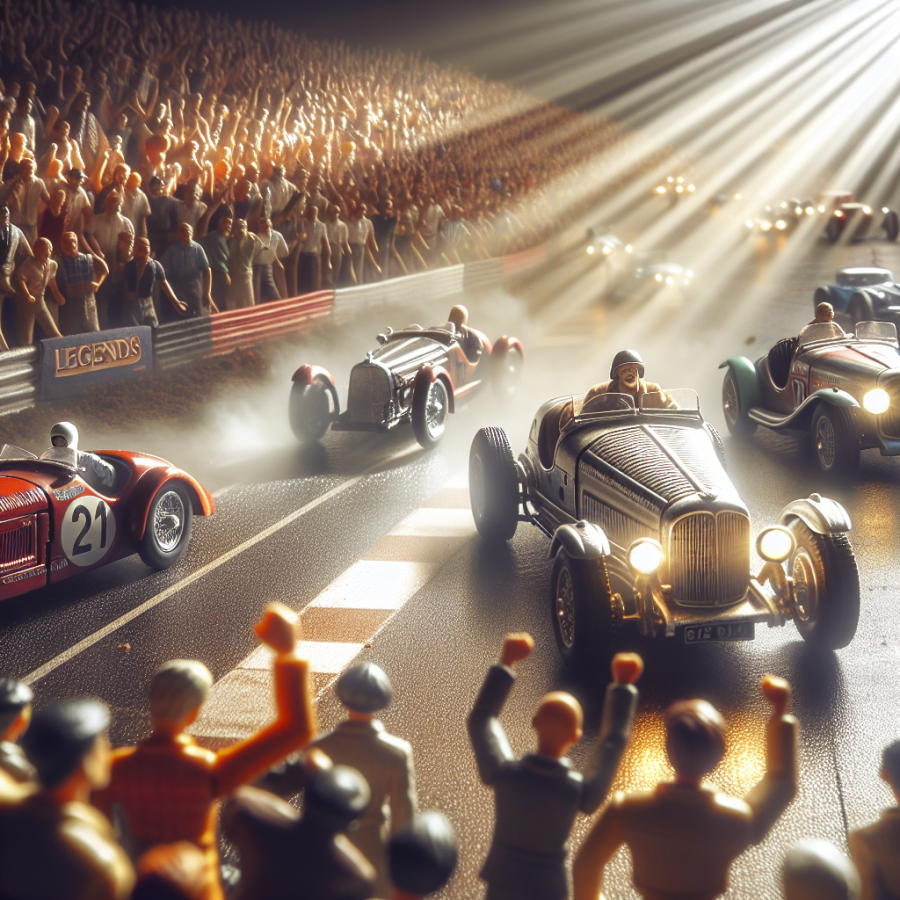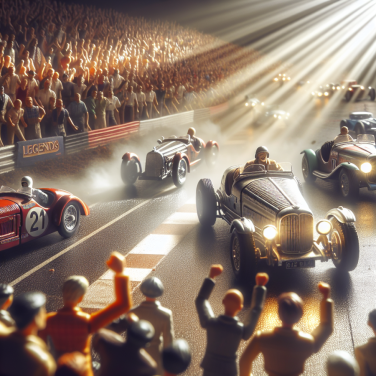Modern Marvels: How Legends Car Racing Captivates Fans Today
Legends car racing, a motor sport that pays homage to the early days of stock car racing, continues to captivate fans across all ages with its unique blend of historical aesthetic and competitive excitement. These 5/8 scale replicas of classic American automobiles from the 1930s and 1940s, like the Ford Coupe, Chevrolet Sedan, and Dodge Brothers Coupe, come with modern performance that delivers an adrenaline-filled experience, both for the drivers and the spectators.
The charm of Legends racing is not solely in the nostalgic look of the cars but also in the strict regulations that level the playing field. Each car is powered by a Yamaha motorcycle engine, ensuring comparable horsepower, which tests the skill of the drivers rather than the depth of their pockets. This emphasis on driver ability over mechanical advantage keeps competitions tight and unpredictable, adding to the overall thrill.
With divisions for young, semi-pro, pro, masters (drivers of forty years and older), and now the popular "Golden Masters" for drivers over sixty, Legends car racing is accessible to enthusiasts at virtually any stage of life. This inclusivity helps to sustain a passionate community that supports the growth and longevity of the sport.
Tracks around the country, and indeed across the globe, from short oval circuits to road courses, host Legends car racing events. These venues are often filled with dedicated fans who revel in the roar of the engines, the whiff of burning rubber, and the close-quarter battles that are a hallmark of Legends races. The cars, while retro in design, pack a punch with acceleration and agility, making every lap an exhibition of raw, unfiltered racing.
The technical aspect of the cars is thoroughly modern, with features like adjustable suspension and disc brakes. This juxtaposition of old-school aesthetics with contemporary racing technology not only makes Legends cars a marvel to witness in action but also provides an educational platform for those looking to build a career in motorsports. Younger drivers can learn the intricacies of car setup and handling before possibly advancing to higher levels of racing.
One cannot discuss the success of Legends car racing without mentioning the community that keeps these machines thundering around the tracks. Clubs and associations dedicated to the support of Legends racing have sprouted up, fostering camaraderie among racers and ensuring that the events maintain a family-friendly atmosphere. Regular racing events, paired with exhibition runs and meet-and-greets, allow fans to get up-close and personal with the cars and drivers they cheer for.
Read also:
Patball: The Exciting Game Blending Tennis and Handball
Tracing the Origins of Legends Car Racing: A Blast from the Past
Legends car racing might seem like a modern innovation designed to cater to the excitement of speed enthusiasts, but its origins are deeply rooted in the rich soil of motorsport history. To trace the beginnings of legends car racing, we must turn the pages back to the early 1990s, more precisely to 1992. This is when officials at Charlotte Motor Speedway watched the burgeoning interest in grassroots, affordable racing skyrocket and sought to provide a solution.
The concept behind legends car racing sprang from the mind of track promoter and NASCAR executive Humpy Wheeler and former racer and car builder Elliott Forbes-Robinson. Their vision was clear: to create a cost-effective, competitive, and exciting form of racing that could be accessible to drivers at different levels of experience and could bring the essence of the sport back to local tracks.
The name 'Legends' reflects the inspiration found in the classic American automobiles from the 1930s and 1940s, as these cars were scaled down to 5/8th to capture the aesthetic of that glamorous era. These low-cost race cars were designed with simplicity in mind, featuring a motorcycle engine and a fiberglass body that imitated vintage models like the Ford Coupe, the Chevrolet Sedan, and other iconic silhouettes that once cruised the American highways.
In an attempt to make the sport as uniform and competitive as possible, the specifications of the cars were standardized. All legends cars are built on a common frame and powered by a Yamaha XJ1250, FJ1200, or a later FZ09 1200/1250cc engine, which keeps the playing field even and allows driver skill to shine. This control over the engineering aspects of the cars has been crucial in preserving the integrity of the racing and ensuring fairness.
The first legends car race took place on a sweltering day in April 1992 on the 1/5-mile track located outside of Charlotte Motor Speedway in front of a small, curious crowd. The excitement was palpable, and the series quickly gained momentum. The affordability and equality of Legends cars made it an attractive option for beginners and seasoned drivers alike, democratizing the sport in a way that hadn't been seen before.
As legends car racing expanded, it also leveraged the nostalgic allure of retro styling, combined with the adrenaline rush of wheel-to-wheel competition.




